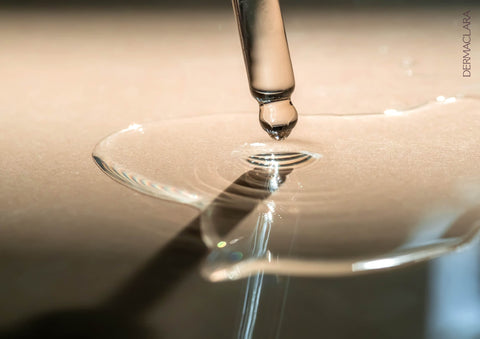Get the Most from Your Serum: Expert Tips on When and How to Use

Now and then, people ask about the benefits of a face serum over other products. Answering that question has always been tricky as there are numerous benefits you stand to enjoy, depending on your skin type and skin regimen.
Over the years, face serum has grown in popularity, with wide varieties flooding the skin care market. If you are among the many searching questions like "What does serum do?" or "What does serum do for your face?" This article provides all the details you need to know, starting from the popular question: "What is serum?"
What is serum?
Face serums are lightweight skin care products that are applied topically on the skin. They differ from other kinds of products in texture, concentration, and appearance. Serums contain a higher concentration of active ingredients like Vitamin C and Hyaluronic acid and are very effective in dealing with specific skin conditions.
When compared to regular moisturizers, serums produce better results in dealing with skin concerns like wrinkles, acne, and dry skin. They come in different formulations as some may be gel, oil, or water-like. Overall, serums can brighten, hydrate, and moisturize your skin.
What does serum do for your face?
The benefits of a serum cannot be overstated because these tiny bottles of active ingredients can transform your face when used appropriately. Since they are lightweight, serums get absorbed into the skin quickly, allowing for deeper penetration and prompting fast action. Depending on your chosen serum formulation, they can help manage and even reduce your skin sensitivity.
Similarly, serums can prevent breakouts in acne-prone skin. Anti-aging serums that contain active compounds like retinol and bakuchiol can also reduce the appearance of fine lines, wrinkles, and crow's feet. Thus, the consistent use of anti-aging serums can reverse aging and promote your skin's health.
For those battling acne scars and hyperpigmentation, skin brightening serums that contain a higher concentration of compounds like vitamin C, glycolic acid, kojic acid, and lactic acid treat uneven skin tone. Highly advanced serums like free-radical serums are gaining popularity in the skincare market because they contain ingredients like vitamin A and resveratrol, which are designed to fight free radicals.
When to use a face serum?
Like other skin care products, incorporating face serum into your skin regimen can be confusing at first. If you are wondering when to use vitamin C serum or how to apply serum on face, the trick to perfecting your application is simple.
Apply your serums twice daily, according to dermatologists. For increased effectiveness, you should apply a considerable amount of serum every morning before you apply your moisturizer. Your serum is what you apply after cleansing your face with a Claraprep face wash or after using your skin toner.
After applying, allow the serum to sit in for one to two minutes before you use your moisturizer. The recommended skincare procedure is cleanse, tone, serum, moisturizer, and sunscreen. At night, apply your serum after washing your face and repeat the procedure the following morning.
How to apply serum on the face?
There are different ways to apply a face serum. However, you should follow certain procedures if you want to achieve your desired result. A regular serum comes in a package, and inside contains a small bottle that comes with a dropper. The dropper can be compressed to take in serum for application and is calibrated to take in the right amount that will fully cover the average person's face.
After cleansing and toning, open the bottle and compress the dropper to take in serum. You can either pour the serum onto your clean palms or apply it directly to your face. However, many people use the dropper to pour the serum all over their face before young their hands. If you choose the former, massage the serum all over your face, neck, ears, and decolletage for even application.
Serums are neither oily nor greasy, so they get absorbed into your skin within minutes. If you choose to use the dropper, avoid contact with your face and sprinkle the serum on your skin. Dermatologists warn against rubbing the dropper all over your skin due to an increased chance of cross-contamination. Pour out the serum and follow the same massage procedure until it gets absorbed into your skin. We recommend using the dropper directly as it prevents wastage, unlike the other method. 
Should I use both serum and moisturizer?
The use of face serums does not negate the importance of a face moisturizer. So, the answer to the "Should I use both serum and moisturizer?" question is you should use both serum and moisturizer. A serum cannot perform the functions of a moisturizer and vice versa. As mentioned earlier, serums perform different functions as they can either hydrate, brighten, correct, or treat specific skin concerns. Moisturizers serve as a protective film that prevents dryness and safeguards the skin's moisture content.
Do you put serum on before or after moisturizer?
Now that you have added another skin product to your never-ending list, it can be tricky to know how and when to use them. The right answer to questions like "Do you put serum on before or after moisturizer?" is to obey the rule of skin layering.
Skin layering governs how to apply your skin products to ensure optimal absorption. The trick to skin layering is to apply your skincare product from the lightest to the heaviest. The lightest product (in consistency) comes before the thick products like occlusives and emulsions.
To begin, wash your face with a cleanser and use a toner to get rid of all the dirt. Follow up with the lightest product, which is usually the serum, and massage it before allowing it to settle. The next light product is the Clarasome moisturizer, so massage it into your skin. Finally, finish up with mineral-based sunscreen with an SPF of 30 or more to prevent photodamage.
Leave a comment